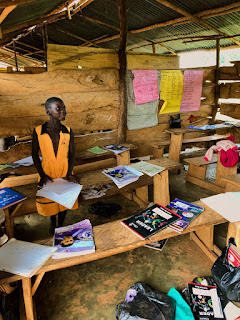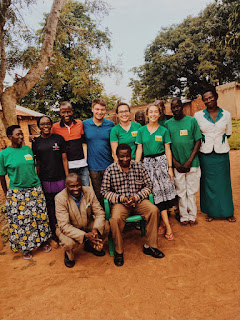
With broad smiles reaching ear to ear, the children of Namunkanaga 2 walk past our new home singing the song we taught them about washing their hands after using the latrine. This melody is a clear indication that we have started to leave our mark; we have started to inspire healthy living.
After assessing the strengths and weaknesses of the community through a SWOT analysis with our Village Health Team members (VHTs), we are shocked and impressed with the village’s proactive approach to family planning. From what we are told by our VHTs, girls as young as 13 are getting the implants and are regularly renewing them every three years once they expire. And despite the strong religious devotion in the community, the men are taking their wives and daughters to get contraceptives, actively supporting them every step of the way. That being said, we still find a disconnect between this information and the sea of children that crowds each household and crams into the school benches. Hopefully when we visit house to house the next two weeks conducting our baseline surveys we will be able to investigate the reasons behind this phenomenon.

This leaves us to assess one of the main challenges of the village: sanitation. Our initial impression is that drinking water is rarely treated or boiled and there is a lack of hand washing after using the latrine. In households without latrines, community members oftentimes urinate or defecate in the bushes or the sugar cane fields, and even if a latrine is available, it is not smoked or scrubbed due to its mud structure allowing an infestation of flies that spread diarrheal diseases. Malaria is another area of concern: although the government distributed nets a few years ago, education surrounding their proper use was not provided and some people are convinced that malaria is contracted by eating mangoes. While it may be a strong statement, we believe it is a true statement- there is a severe lack of education- education about the contraction of diseases, education about the prevention of diseases, and education about the access to treatment.
According to the VHT’s, one thing that cannot be argued is that the people of Namunkanaga 2 are yearning for information and are ready to make large strides towards healthier lives. We extend our utmost gratitude for the warm welcome, hospitality, and encouragement Namunkanaga 2 has given us. We know that a healthy life can be a reality by working together to create a sustainably healthy village that is given the tools and education to keep independently improving.
By Julia Chodyla, Intern, Namunkanaga 2 Village
